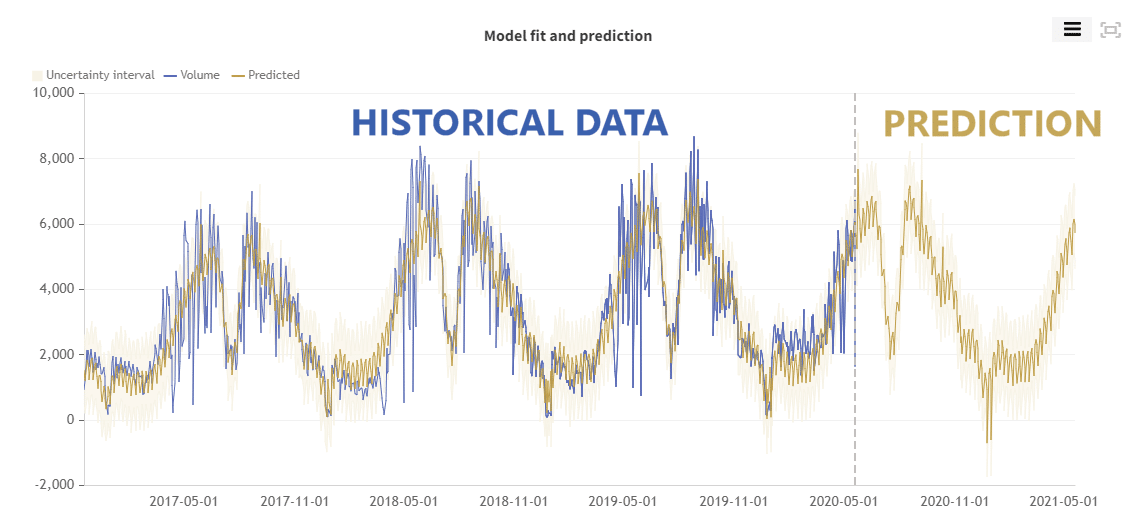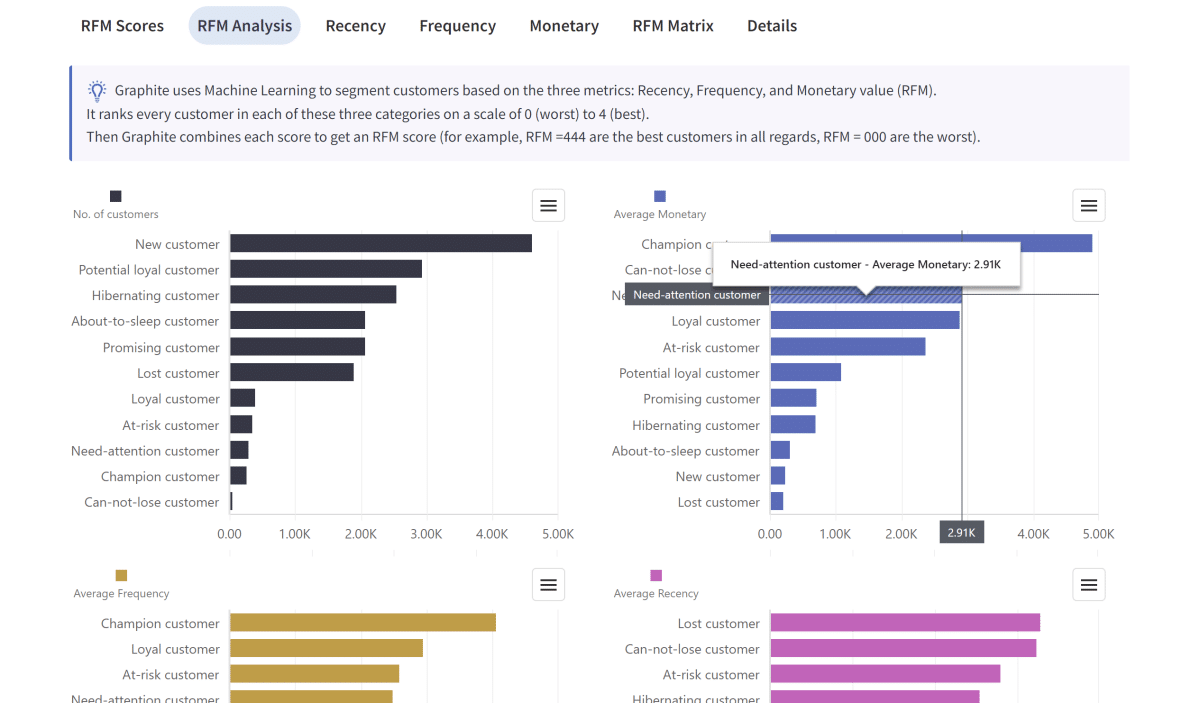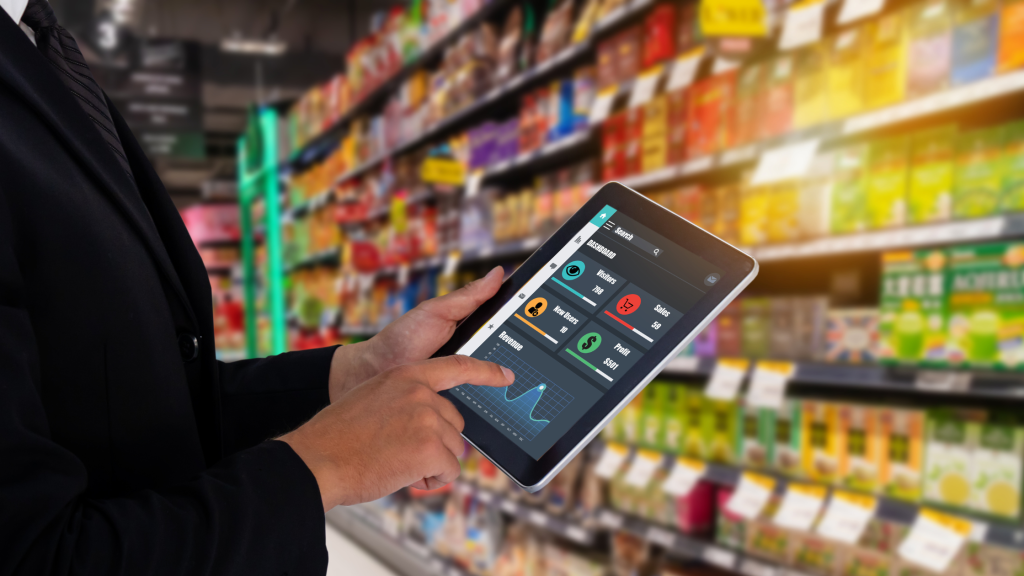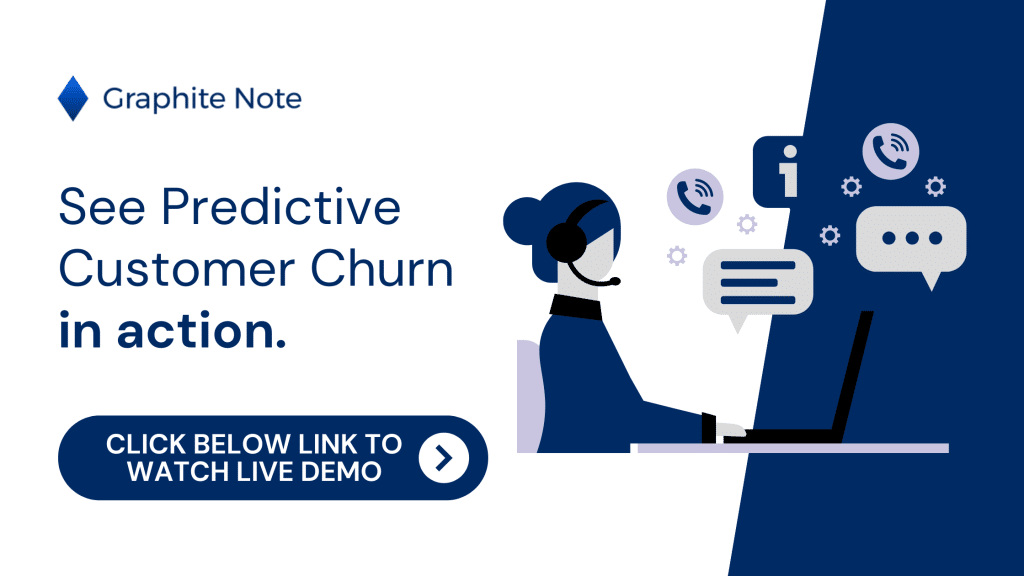Retail predictive analytics are a business requirement for retailers. Retail predictive analytics are a powerful tool. Retail predictive analytics gives retailers valuable insights and enables business success. Predictive analytics helps retailers make data-driven decisions. Predictive retail analytics helps retailers to optimize their operations. Retail predictive analytics helps stores better serve their customers. Predictive retail analytics enables retailers to remain competitive
What are Retail Predictive Analytics?
Predictive retail analytics use historical data, statistical algorithms, and machine learning techniques. Predictive retail analytics forecasts future outcomes. Predictive analysis analyzes patterns and trends. These patterns and trends are found in customer behavior, market dynamics, and other data points. Predictive retail analytics helps retailers make accurate predictions about their business. These can include: future buying patterns, demand fluctuations, and customer preferences.
Retailers can accurately anticipate customer needs and preferences. Predictive analysis enables a retail business to stay ahead of their competition. Predictive analysis enables them to deliver exceptional customer experiences. Predictive analysis helps them to optimize their operations. Predictive analytics in retail combines traditional statistical techniques with advanced machine learning algorithms. Predictive analytics then extracts meaningful insights from vast amounts of data. Predictive analytics identifies patterns and relationships in the data. Predictive analytics enables retailers to make informed decisions. Using this information, they can take proactive action to maximize their business outcomes. Big data has made predictive analytics an essential tool for retailers. Retail predictive analytics enables retailers to leverage their data assets.
They can use this to gain a competitive edge in the retail landscape. Retailers can gain a deeper understanding of their customers in a highly competitive retail industry. Predictive analytics helps retailers to optimize their operations. Retailers can enable business growth, using retail predictive analytics. In a competitive retail sector, retail predictive analysis is an important tool for retail businesses.

The Role of Predictive Analytics in Retail
Retail predictive analytics help retailers to anticipate customer behavior. Using data analytics, retailers can optimize their inventory management. Predictive analytics helps to build predictive pricing models. Retailers can use this information to fine-tune their pricing strategies. Data analytics helps retailers understand what their customers want. Time sales data can help retailers understand when customers want it. Historical sales data can help retailers understand what price their customers prefer. Predictive retail analytics helps retailers tailor their products, services, and strategies. Using descriptive analytics, retailers can reap the benefits of retail predictive analytics. Descriptive analytics are the storytellers of the past. Descriptive data analysis analyzes historical data. This past data analysis helps retailers understand events, market trends, and consumer patterns. Retail predictive analytics help build a market basket analysis. A market basket analysis helps retailers build more effective strategies. These help to better serve their customers.
Predictive analytics can help retailers identify the most popular products. Predictive analytics then helps retailers anticipate demand fluctuations. Retail predictive analytics analyzes historical sales data, market trends, and external factors. These external factors could even include weather patterns. Using retail predictive analytics, retailers can accurately forecast demand. They can also adjust their inventory levels as needed. This ensures that customers can find the products they need when they need them. Retail predictive analytics helps retailers to minimize the risk of overstocking or understocking.
Beyond inventory management, predictive analytics can help retailers optimize their pricing strategies. Predictive analytics analyzes customer data, market dynamics, and competitor pricing. Then, retailers can identify the optimal price points for their products. This enables retailers to maximize revenue and profitability while remaining competitive in the market.
Predictive analytics can help retailers identify potential risks and opportunities. This enables retailers to mitigate risks. Predictive analysis helps retailers capitalize on emerging trends. Retail predictive analytics helps retailers stay ahead of the competition. Retail predictive analysis analyzes customer behavior, market trends, and external factors. Using this information, retailers can identify potential risks. These risks could include customer churn or market saturation. Retailers can take proactive measures to mitigate these risks. Being able to mitigate these risks ensures business success.
Retail predictive analytics can also help retailers identify emerging trends and opportunities. Retail predictive analytics analyze customer data, market trends, and industry insights. Using this information. retailers can identify new market segments, emerging product categories, or untapped customer needs. Retailers can capitalize on these opportunities and drive innovation in their offerings.
Predictive analytics tools help retailers optimize their operations and drive sustainable growth. Leveraging data analysis, retailers can gain a competitive edge. Predictive retail analytics helps to enhance customer experiences, and optimize retail business outcomes.
The Benefits of Retail Predictive Analytics
Retail predictive analytics brings a range of benefits to retailers. The key advantages of retail predictive analytics include:
Enhanced Customer Experience
A seamless, personalized customer experience is key to building customer loyalty. Enhanced customer experiences lead to repeat business. Predictive analytics enables retailers to gain deep insights into customer preferences. Predictive analytics helps retailers understand customer behaviors, and buying patterns. By understanding individual customer needs and preferences, retailers can deliver targeted product recommendations. Predictive analytics helps retailers build personalized offers. Predictive retail analytics helps to shape tailored customer experiences. Retailers don’t need to be data experts to use predictive and prescriptive analytics. Graphite Note simplifies the data analysis process. Graphite Note empowers retailers to uncover valuable customer insights. Graphite Note helps retailers build better customer experiences.
A seamless, personalized customer experience is key to building customer loyalty and driving repeat business. Predictive analytics enables retailers to gain deep insights into customer preferences, behaviors, and buying patterns. By understanding individual customer needs and preferences, retailers can deliver targeted recommendations, personalized offers, and tailored experiences that resonate with customers on a personal level.
For example, imagine a customer named Sarah who frequently shops at a clothing store. Through predictive analytics, the retailer can analyze Sarah’s past purchases, browsing history, and demographic information to understand her preferences. With this information, the retailer can recommend new arrivals and promotions that align with Sarah’s style and interests, creating a personalized shopping experience that keeps her coming back for more.
With the help of a no-code predictive and prescriptive analytics tool like Graphite Note, retailers don’t need to be data experts to unlock the potential of predictive analytics. Graphite Note simplifies the data analysis process, empowering retailers to uncover valuable customer insights and enhance the overall shopping experience.
Streamline Inventory Management
Effective inventory management is fundamental for retail success. Predictive analytics helps retailers optimize their inventory levels. Predictive analysis by accurately forecasts customer demand, identifies slow-moving products, and minimizes stockouts. Retail predictive analytics leverages historical sales data, market trends, and other relevant factors.
This enables retailers to make data-driven decisions about inventory management. These include business decisions around inventory replenishment, allocation, and assortment planning. Graphite Note’s intuitive interface and powerful analytics help retailers identify demand patterns. Graphite Note helps retailers optimize their inventory management strategies, and improve profitability.
Optimize Pricing Strategies
Pricing is a critical factor in driving revenue and profitability. Predictive analytics enables retailers to set optimal pricing strategies. Predictive retail analytics analyzes customer demand, market competition, and product profitability. Retailers can learn more about price elasticity and customer willingness to pay. Retailers can then determine the right pricing levels.
The right pricing model maximizes revenue and profit margins. Graphite Note enables retailers to easily analyze pricing data. Graphite Note helps retailers simulate different pricing scenarios. Graphite Note helps retailers identify the most profitable pricing strategies. Retailers can stay competitive in the retail landscape, by making data-driven pricing decisions.

Key Components of Retail Predictive Analytics
The key components of retail predictive analytics include:
Data Collection and Management
Accurate and reliable data is the bedrock of predictive analytics. Retailers need to collect and consolidate relevant data from various sources. These can include transactional data, customer data, market data, and social media data. When retailers ensure data completeness and data quality, they can get meaningful insights. They can use retail predictive analytics to obtain reliable predictions.
Transactional data gives retailers the ability to gather information about their customer behavior. This includes: purchase history, product preferences, and customer demographics. Retailers can identify patterns and trends. Predictive retail analytics helps them make informed decisions on inventory management. Predictive retail analytics can guide pricing strategies, and targeted marketing campaigns.
Collecting and managing customer data is vital for understanding consumer behavior and preferences. Retailers can analyze this customer data using retail predictive analytics. Retailers can personalize the shopping experience, offer tailored recommendations, and anticipate customer needs.
Graphite Note enables retailers to connect, clean, and shape data from multiple sources. This ensures data accuracy and integrity in their predictive analytics journey. Graphite Note’s data integration and data cleaning tools help retailers streamline data collection. These tools enable retailers to streamline the data collection process. Retailers can focus on extracting valuable insights about their customers.

Analytical Models and Algorithms
Choosing the right analytical model and algorithm is important in predictive analytics. Retailers need to select the right machine learning model. The machine learning model must align with their business objectives and data characteristics. Using advanced algorithms, retailers can uncover patterns, correlations, and trends. Advanced algorithms include regression analysis, decision trees, and neural networks.
Regression analysis can help retailers understand the relationship between variables. These variables could include sales and advertising expenditure. Retailers can analyze historical data. Retailers can predict future sales based on their marketing budget allocation.
Decision trees are useful for customer segmentation. Customer segmentation is the process of classifying customers into different segments. These segments are defined by their characteristics and behaviors. Customer segmentation enables retailers to tailor their marketing strategies to specific customer groups. This maximizes the effectiveness of their marketing campaigns.
Graphite Note simplifies the process of applying advanced analytics techniques. This enables retailers to build, test, and deploy predictive models, without technical expertise. Graphite Note provides a wide range of pre-built algorithms and models. Graphite Notes makes the power of predictive retail analytics accessible for all retailers.
Implementation and Monitoring
Implementing predictive analytics is an ongoing process. Retailers need to develop a comprehensive implementation plan. Retailers must integrate predictive analytics into their existing systems. Retailers should ensure continuous, proper monitoring and evaluation of the results. Retailers can fine-tune their strategies by iterating their predictive analytics models. This improves their machine learning model’s predictive accuracy over time.
When implementing predictive analytics, retailers should consider the scalability and integration capabilities. The retail predictive analytics platform must integrate with existing systems. These include: point-of-sale systems, customer relationship management software, and inventory management systems.
When monitoring the performance of predictive models, retailers can identify areas for improvement. Retailers can make data-driven decisions to optimize their operations. Real-time monitoring capabilities enable retailers to track key performance indicators. Real-time monitoring also helps retailers detect anomalies. Retail predictive analytics enable retailers to take proactive actions.
Retailers can leverage predictive analytics to forecast demand. Retailers can use predictive analytics to optimize their pricing strategies. Retail predictive analysis helps to manage inventory levels. With accurate demand forecasts, retailers can avoid stockouts and overstock situations. This leads to improved customer satisfaction and increased profitability.
Graphite Note’s real-time monitoring capabilities help retailers to track predictive model performance. Graphite Note helps retailers make data-driven decisions with confidence. Graphite Note gives retailers intuitive dashboards and visualizations. These enable retailers to easily interpret and communicate the insights.
Overcoming Challenges in Retail Predictive Analytics
These are some of the challenge in retail predictive analytics:
Dealing with Data Quality Issues
Poor data quality can undermine the accuracy and reliability of predictive analytics models. Retailers need to ensure data completeness, validity, and consistency to generate meaningful insights. Data quality controls and data cleaning are important. These help to enhance the reliability of predictive model predictions. Graphite Note has data preparation and data cleansing tools. Retailers can easily clean and shape their data using Graphite Note. This ensures high data quality for predictive analytics purposes.
Ensuring Privacy and Security
Retailers handle vast amounts of customer data. Ensuring privacy and data security is important. Retailers need to implement robust security measures. Retailers must comply with data protection regulations, and encrypt sensitive customer information. By prioritizing privacy and security, retailers build trust with their customers. With robust security in place, retailers protect their data assets.
Graphite Note has robust security features. These include data encryption and user access controls. Graphite Note helps retailers to safeguard sensitive data and protect retailers’ privacy.
Addressing Skill Gaps and Training Needs
Building a data-driven culture requires the right skills and expertise. Retailers need to invest in training and upskilling their teams. This will ensure retailers have the necessary analytical capabilities to leverage predictive analytics. Retailers can equip their workforce with the right skills and tools. This way, they can reap the benefits of predictive analytics.
Graphite Note has a no-code interface and user-friendly features. Graphite Note helps retailers to empower their teams to become citizen data scientists. This drives innovation and data-led decision making.
Conclusion
Retail predictive analytics are an essential tool for retailers. Retailers can make informed decisions using retail predictive analytics.





